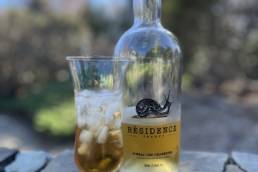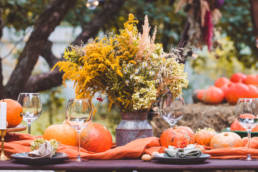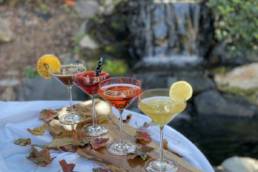My wine is too hot… mine is too cold… and mine is just right
What temperature should I serve (or consume) different wines and does it really matter?
I have to be honest that I lean heavily toward the non-pretentious side of wine and you will learn that from any content I put out there. Sometimes, however, the wine snobs do have a point, and this is precisely one of those times. What temperature you serve or drink your wine won’t harm you. Nor will it make sommeliers or winemakers send you strongly worded letters / emails brow-beating you into changing your ways. It may get you a few second looks in a swanky pretentious restaurant, but you do you; especially since you are the one paying.
Wines at the improper temperature will, however, affect your perception of the components of those wines. So, you actually may enjoy a wine less and judge it wrongfully if served too warm or cold. As a digression, if you think it really doesn’t matter to you because your palate “isn’t that refined”, then there is another article you need to read because that statement is absolute BS.
Let’s get back to concentrating on the what and why of these wine temperatures. I think the why is a bit more important and a better place to start. If you think about it, we all know that eating or drinking anything too cold lessens the ability to taste it. Think about the cold pizza analogy. If you take cold pizza out of the fridge, there isn’t much in the way of smell and even the taste is muted. If you take that very same slice and throw it in the microwave, as it heats up you can smell the pizza throughout your kitchen.
Another example is the bad beer analogy. Although there is much to be said about an ice-cold beer after cutting the grass on a hot summer day, I’m convinced that the attractiveness of this comes from the refreshing element rather than the flavors. A really good beer favors consumption a bit warmer than the barely-above-freezing that we usually do. If you want to drink a cheap beer or one that you don’t particularly like, chill the stink out of it, sometimes literally.
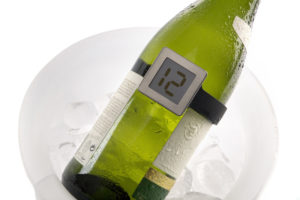
Wine served too cool has a similar effect, you miss out on some of the aromatics. This is especially true of white wines as people tend to chill them to just above freezing. This issue is multi-faceted as white wines usually have more fragile and subtle aromatics versus red wines. Before the rank-and-file wine snobs inundate me with examples that are the antithesis of the last statement, I’m using this as a generalization. Sit back down and keep sharpening your saber.
As I was saying, whites served horribly cold will be without much aroma and flavor. The problem with this is balance. Our perceptions of wine components are affected at these cooler temperatures. Acid will seem less sour but if the wine is very cold, the other components are muted and sometimes all you can taste is the acid. Sweetness can help as it remains temperature independent. So for wines meant to be served very cold (ex: sparkling), a small amount of residual sugar can help the wine feel “friendlier” on your palate.
Colder temperatures for red wines make the astringency of tannins and heat of alcohol perceived less, which can be good or bad depending on the wine; Again, it’s all about balance. If too cold, we have the same issues as with the white wines, loss of those lovely but fleeting aromas.
If we look at the other proverbial side of the coin, serving wines a bit too warm, there are another set of problems. We usually don’t have the problem of serving white wines too warm, but if we did, they would taste more sour and bitter. The common mistake remains serving red wines too warm. This becomes overtly obvious as the reds not only display the bitterness of the tannins more overtly but the alcohol (which is usually higher in red wines) volatizes (evaporates out of solution) easier. Thus, we shove our noses in a glass of red and all we smell is alcohol and when we taste it, bitterness and astringency. Again, the wine snobs are poised to leap, but this is a generalization so don’t get your serviettes in a wad.
I believe part of the confusion with red wines comes with the misconception of the phrase “cellar temperature”. Many believe that this conveys to the definition of room temperature and nothing could be further from the truth, unless you live in a subterranean cellar or keep your house around 55 – 60 degrees F year-round. Thus, we mostly drink our red wines much too warm. What a shame as most people may assume that these reds are supposed to be bitter and alcohol forward. Sad.
So, what do we do? Do we spend an enormous amount of time moving wines in and out of the fridge or ice bucket in an endless effort to maintain the perfect temperature? The short answer is no. This would be not only ridiculously difficult; it sucks the fun out of the whole wine experience; part of the problem with the industry in general today.
There are, however, a few things you can do to ensure that you and your bottle buds are extracting the most you can from that glass of wine. I keep it pretty simple in my house with serving temps. I error to the colder side and let the wines warm up a bit. Unless you have a wine storage unit that has different temperature zones, you are in the same boat as me.
For sparkling wines, I give them about 45 minutes, at least, in the freezer. Yes, I said in the freezer. If I am not going to open the bottle immediately, I put it in the coldest part of the refrigerator until the time arises. I cannot stress enough that you should set a timer, or two, to remind you to take the bottle out of the freezer. This is a mistake you will only make once. Although sparkling wine icicles hanging from your freezer shelves are quite beautiful, they are hell to clean up; not to mention you wasted a bottle of sparkling. Sacrilege.
If the freezer is full or you don’t trust yourself to remember, a bucket of salt water works tremendously well. Remember back to your chemistry classes that salt water freezes at a much lower temperature than water without dissolved salts. Thus, the water will be incredibly cold and surrounding the bottle to chill from all sides. I use some ice, a small amount of water and a few tablespoons of table salt. If you want to maintain the label on the sparkling in good form to show your guests, place the bottle in a plastic bag while in the cold brine solution; a bread bad works great for this.
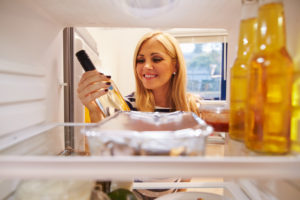 I take a similar path with my white wines but with slightly less freezer time, 25 – 30 minutes. If it goes in the fridge until serving time, I place the bottle in a central location (not the coldest area). Depending on how long it lives in there, you may need to pull it out for 10 minutes or so before serving to warm up a bit. The lighter styles of white wines (Pinot Grigio, Chablis, Albariño, etc.) can tolerate being a bit colder versus that oak bomb Chardonnay or white Rhone blend.
I take a similar path with my white wines but with slightly less freezer time, 25 – 30 minutes. If it goes in the fridge until serving time, I place the bottle in a central location (not the coldest area). Depending on how long it lives in there, you may need to pull it out for 10 minutes or so before serving to warm up a bit. The lighter styles of white wines (Pinot Grigio, Chablis, Albariño, etc.) can tolerate being a bit colder versus that oak bomb Chardonnay or white Rhone blend.
Red wines are a bit more dependent. Whether they are a sturdy red (Cabernet Sauvignon) or a lighter red (Pinot Noir), I still chill them in the fridge for about 20 minutes. There are some personal preferences here so better to slightly overchill and let them warm up to your desired consumption temperature, drinking throughout the process, of course. Most will chill the lighter reds a bit colder but I feel their aromatics are more subtle and easier to miss if too frigid.
Lastly, even though I am including the recommended serving temperatures for those that are type A or indulge on precision, these are suggestions. There are bottle thermometers that work with varying degrees of success and I will be reviewing them here, if you are in the market for wine temperature precision.
Since your perceptions of wine components are extraordinarily personal, I invite you to experiment with different serving temperatures. Cool the wines below the suggested temperatures and taste them at that temperature and continue to taste them as they warm up. This is a great excuse to have a tasting party with your friends. Write your notes down with the different wines and different temperatures and compare them at the end. You will be surprised that although there will be some commonality, everyone’s perceptions will differ slightly. If nothing else, it’s a good excuse to get together and drink, all in the name of scientific experimentation and education.
- Light-Bodied White 45-50° (7-10°C)
- Full-Bodied White 50-55° (10-13°C)
- Sweet White 43-47° (6-8°C)
- Rosé 45-55° (7-13°C) – depends on style of rosé
- Light-Bodied Red 50-55° (10-13°C)
- Medium-Bodied Red 55-58° (10-12°C)
- Full-Bodied Red 59-64° (15-18°C)
- Sparkling White 45-50° (7-10°C) – many prefer cooler
- Vintage Champagne 43-50° (6-10°C)- many prefer cooler
- Dry Sherry & Dry Madeira 43-47°F (6-8°C)
- Tawny Port & Sweet Sherries 54-61°F (12-16°C)
- Sweet Madeira & Vintage Port 64-68°F (18-20°C)


